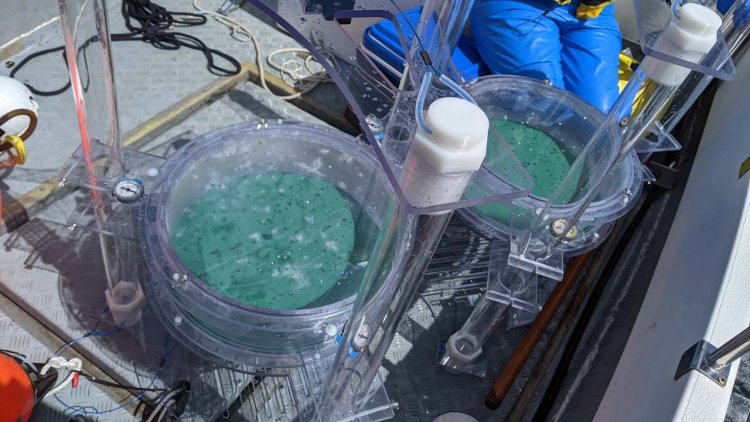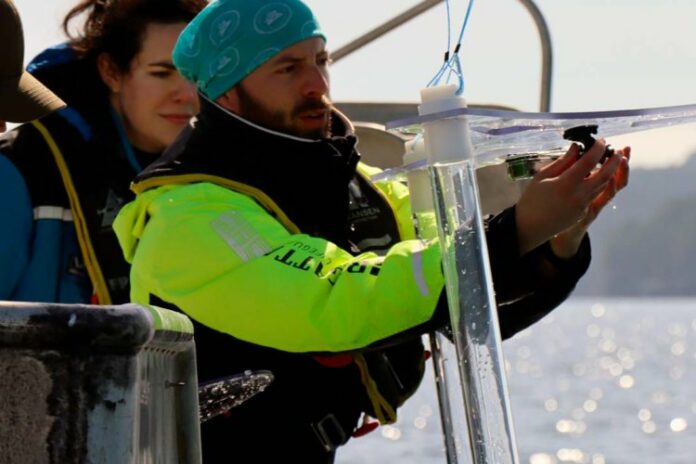When the turbines are operating, they create a constant, low-frequency underwater noise that spreads out from an offshore wind farm.
“We already know that fish and other sea creatures are sensitive to sounds, and that some species react to low-frequency underwater noise”, says Alessandro Cresci, a marine scientist at the Institute of Marine Research (IMR).
“What we don’t know is how fish, particularly in their early larval life stage, react to the sound of offshore wind turbines. This is a new industry, particularly here in Norway.”
Cod is one of the species that is sensitive to low-frequency noise.
In order to learn how cod in the North Sea may react to the planned offshore wind farms, the scientists carried out a practical experiment: they recreated the situation in a fjord, albeit on a smaller scale.
“We filmed cod larvae drifting naturally in the water inside transparent acrylic cages with mesh walls. While the cages were drifting in the water, we used a loudspeaker to emit a constant, low-frequency noise at 100 Hz. We wanted to see whether the larvae changed their behaviour”, explained Cresci.
Around 90 cod larvae were tested in the fjord – half were exposed to sound, while the other half were allowed to swim in peace.

When they were allowed to swim in peace, the larvae headed towards the northwest. But when exposed to the noise, the cod larvae chose to swim towards it.
“This is one, small-scale experiment, but our results show that cod larvae drifting with the ocean currents past or near to an offshore wind farm may be attracted by the underwater noise from the turbines”, explains the researcher.
It is real struggle for cod larvae to survive through to adulthood. Even small changes in their spawning and nursery grounds may affect the stock, and it is useful to know how different activities affect them.
Now the researchers are planning to test other commercially and ecologically important species in the same way.
“It is important to learn more about what impact a new industry like offshore wind power may have on fish and ecosystems.”



